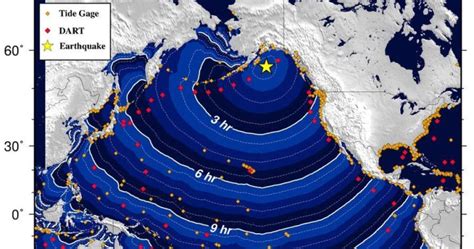B.C. Earthquake: Tsunami Warning Cancelled
A powerful earthquake struck off the coast of British Columbia on [Date], prompting a tsunami warning for parts of the province. However, the warning was later cancelled, leaving many wondering about the event and its aftermath.
Understanding the Earthquake
The earthquake, measuring [Magnitude] on the Richter scale, occurred at approximately [Time] near [Location]. This location, within a known seismically active zone, is unfortunately prone to significant seismic activity. The quake's depth was recorded at [Depth], influencing the intensity felt in surrounding areas. While significant, the depth helped mitigate the surface impact compared to shallower quakes of similar magnitude.
The Tsunami Warning and its Cancellation
Following the earthquake, a tsunami warning was issued as a precautionary measure by [Relevant Authority, e.g., the Pacific Tsunami Warning Center]. This immediate response is standard protocol for significant seismic events near coastlines. The warning prompted evacuations and heightened safety measures in vulnerable coastal communities.
However, after careful monitoring and analysis of sea level readings and seismic data, the warning was subsequently cancelled. This cancellation indicated that the initial threat of a destructive tsunami had passed. While some minor sea level fluctuations might have been observed, these were deemed insignificant and posed no immediate danger to coastal populations.
Preparing for Future Earthquakes and Tsunamis
This incident serves as a vital reminder of the importance of earthquake and tsunami preparedness. While the immediate threat passed, the event highlights the potential for future seismic activity in the region. Here are some key steps individuals can take to prepare:
- Develop an emergency plan: This plan should include evacuation routes, meeting points, and communication strategies. Knowing what to do in the event of an earthquake or tsunami is crucial for mitigating risks.
- Create an emergency kit: Assemble a kit containing essential supplies such as water, non-perishable food, first-aid supplies, a flashlight, and a battery-powered radio. Consider pet needs as well.
- Secure your home: Strengthening your home's structure, securing heavy objects, and identifying safe zones can significantly reduce the risk of injury during an earthquake.
- Stay informed: Monitor official sources for updates and warnings during and after seismic events. Reliable sources include [List relevant government agencies and news sources].
The Importance of Responsible Reporting
The rapid dissemination of information, both during and after the event, played a crucial role in public safety. Accurate and timely reporting is key, ensuring that communities receive the information they need to respond effectively. It is also important to avoid spreading misinformation or unconfirmed reports, which could cause undue panic or confusion.
This earthquake serves as a powerful reminder of the unpredictable nature of natural disasters and the importance of preparation. By understanding the risks and taking proactive measures, individuals and communities can significantly reduce the potential impact of future earthquakes and tsunamis. The cancellation of the tsunami warning, while reassuring, is not a reason to diminish the importance of continued preparedness.
